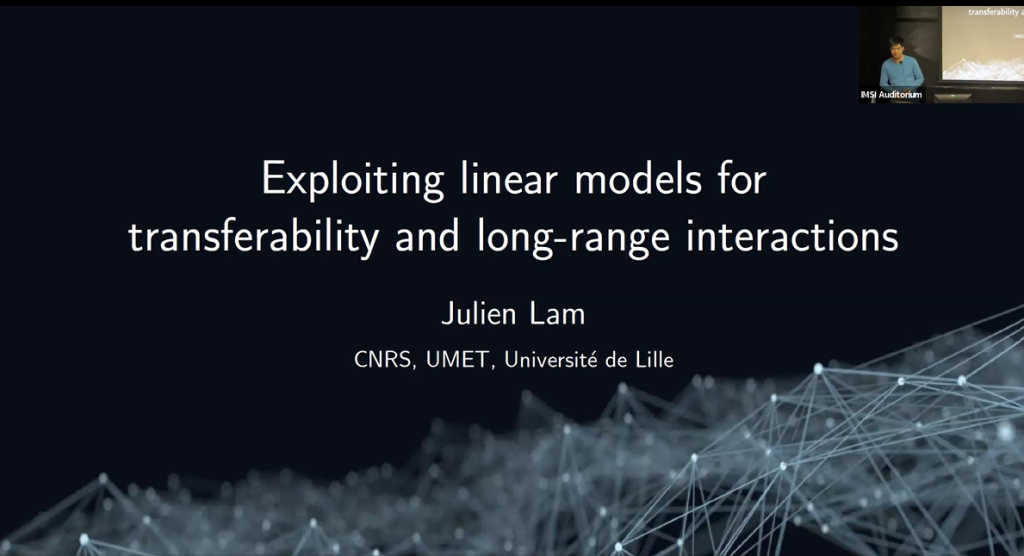Exploiting linear models for transferability and long-range interactions
Presenter
April 11, 2024
Event: 41742
Abstract
While first principles molecular simulations have been pivotal for material science in general, numerous phenomena including nanoparticle formation require a drastic reduction of the computational costs. With this objective in mind, machine-learning interaction potentials have been recently developed for lots of different applications and numerous high-impact studies have already demonstrated the great efficiency of these techniques. After this first breakthrough, the current effort is on investigating the limitations associated with those techniques and on developing ways for obtaining similar accuracy with simpler models. In this contribution, we will present Physical LassoLars Interaction Potential (PLIP) which is a method combining a linear formulation of the potential with a constrained regression scheme. We will then demonstrate the ability of PLIP to generate an accurate model for zinc oxide interactions and provide a thorough comparison with neural network potentials in terms of transferability. Next, we will describe how PLIP can be extended to account for long-range interactions. The final part of this contribution will be dedicated to a study of crystal nucleation in nanoparticles of zinc oxide where we will show that different nucleation pathways are competing depending on the studied degree of supercooling.
